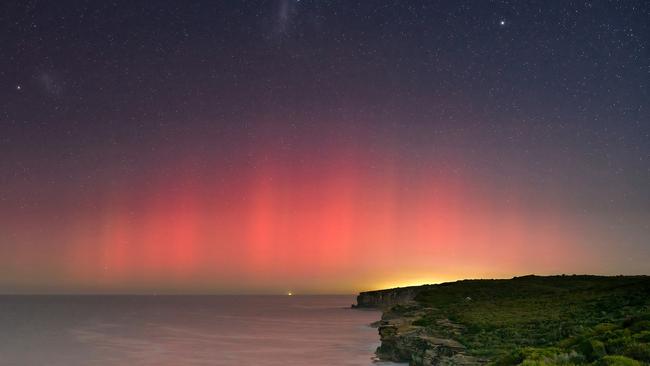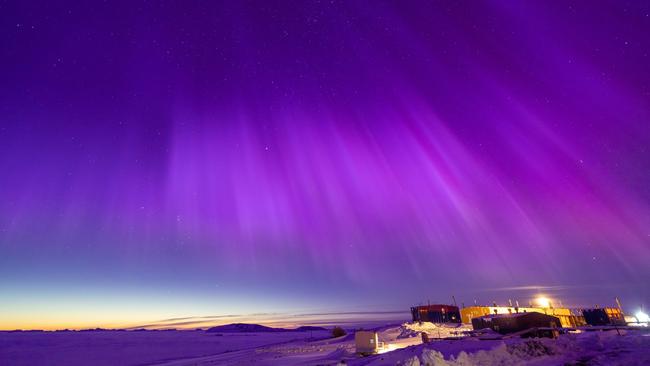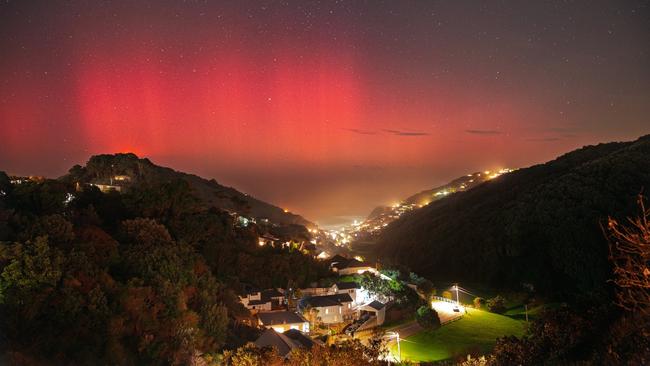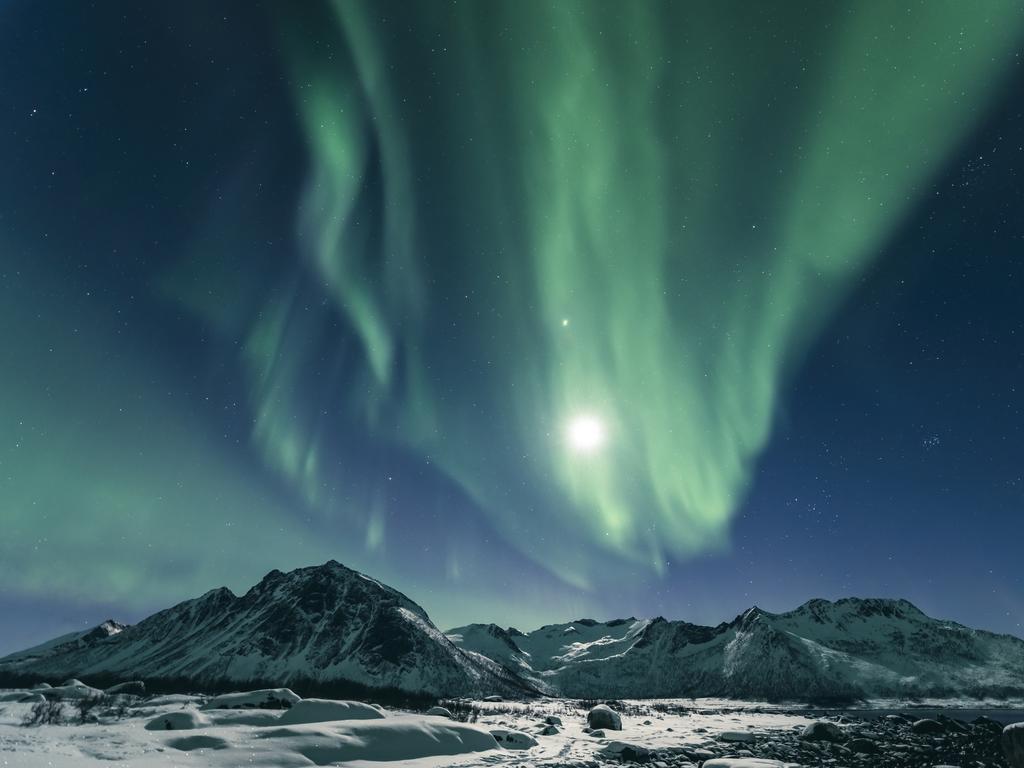Solar flare sparks auroras that give nation a vivid light show
A solar flare that erupted early on Saturday created astronomical light shows in Tasmania, Victoria, NSW, South Australia and parts of Western Australia.

Sydney might have the annual Vivid festival lighting up its landmarks at the moment, but large swathes of the nation had something far grander to observe in the early hours of Monday morning.
A massive M8.2 solar flare that erupted early on Saturday, one of the largest this year, created astronomical light shows in Tasmania, Victoria, NSW, South Australia and parts of Western Australia.
The remarkable auroras were even reportedly visible in a few southern locations in Queensland.

Auroras are caused by geomagnetic storms, which are triggered by material from the sun being ejected into space.
When the material reaches the Earth’s upper atmosphere, it collides with atoms of oxygen and nitrogen, producing coloured lights.
The Australian Space Weather Forecasting Centre issued a G4 rating for the geomagnetic storm, one level below the top rating, meaning the auroras, usually only visible in polar regions and high latitudes, were able to be seen far further north in Australia than they typically are.
The major eruption from an active region of the sun numbered 4100 was followed by a series of smaller flares. Combined with stronger than normal solar winds caused by a negative-polarity coronal-hole stream, the mass ejection of material hurtled across the 150 million kilometres in about two days – at an estimated speed of 1938km per second – to hit the Earth’s upper atmosphere.

Just as the range of the auroras was greater than usual in Australia, the same was true for the northern hemisphere, where auroras were spotted as far south as Colorado, Kansas, Missouri, California and New Mexico in the US.
New Zealand was also treated to the light show, with bright auroras visible in major cities including Wellington and Christchurch

Astronomers predicted that the aurora display would continue on Monday night and into early Tuesday morning as the geomagnetic storm continued.
The worst solar storm to strike the Earth occurred more than 14,000 years ago, near the end of the last ice age. Researchers at the University of Oulu in Finland, who developed a model to pinpoint the strength of the storm, concluded that it was 500 times stronger than the largest modern solar storm, in 2005.
A repeat of the storm that occurred in 12,350BC would likely have cataclysmic consequences, including wiping out electrical infrastructure and causing months-long blackouts, as well as knocking out satellite internet, television and communications.







To join the conversation, please log in. Don't have an account? Register
Join the conversation, you are commenting as Logout